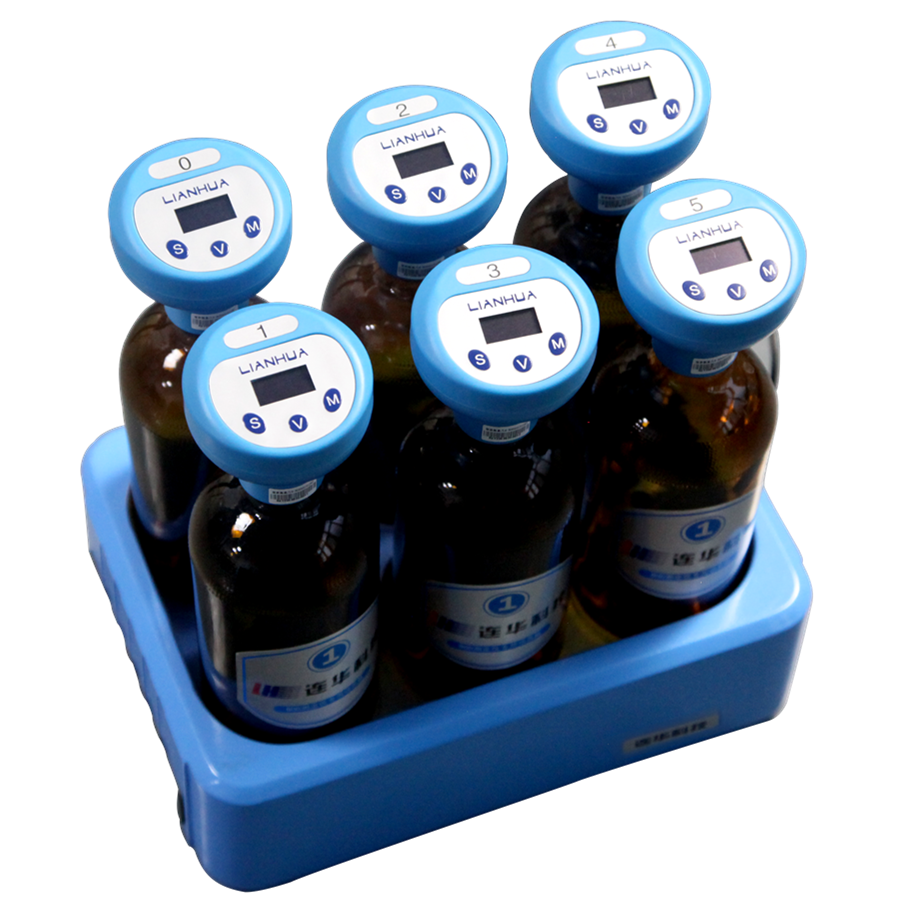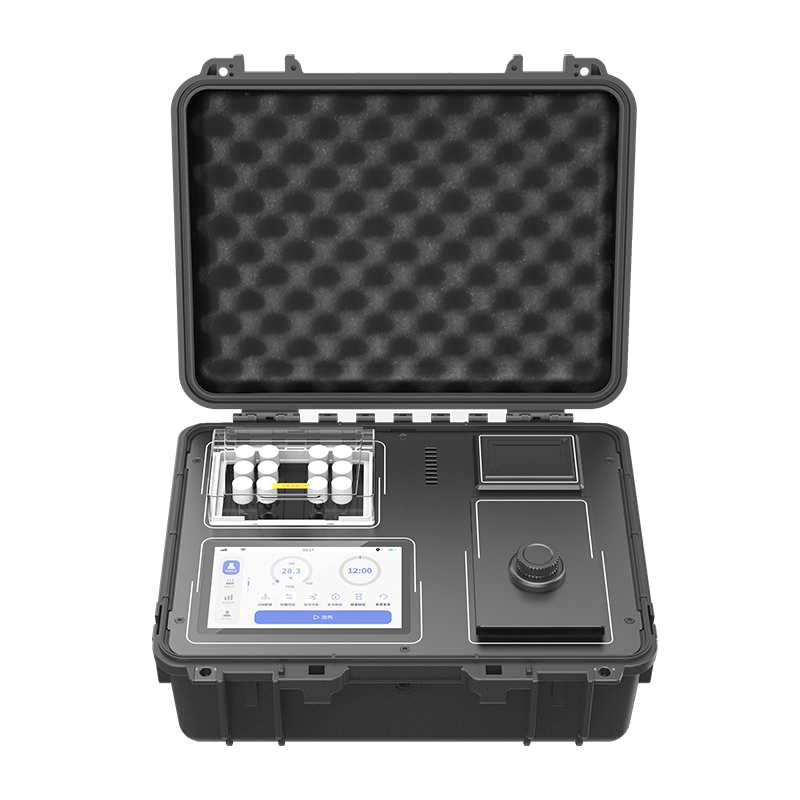How Portable Multi Parameter Water Quality Meters Enhance Field Testing
Key Advantages of Portable Multi-Parameter Meters in Field Testing
Real-Time Data Collection for Immediate Decision-Making
Portable multi-parameter meters provide on-the-spot measurement of water quality, which is crucial for immediate decision-making. These devices enable the real-time collection of crucial data, allowing operators to address issues like contamination or safety breaches promptly. This immediacy in data access enhances response time and operational efficiency, reducing potential risks to both resources and humans. Studies indicate that real-time monitoring can enhance operational efficiency in water quality management by up to 30%, highlighting the value of these tools for timely and effective water management decisions.
Cost Savings Through Reduced Laboratory Dependency
One of the significant advantages of using portable multi-parameter meters is the considerable reduction in laboratory testing costs, which can range from $25 to $150 per sample. By allowing water quality tests to be conducted directly in the field, these portable meters minimize the need for transporting samples to labs, reducing both delays and associated costs. Organizations can achieve substantial savings, with some potentially cutting expenses by up to 50% by leveraging field testing solutions. This makes portable meters a cost-effective alternative, particularly for organizations with tight budgets or those seeking to streamline operations without compromising on data quality.
Enhanced Accuracy with Integrated Sensor Technology
Modern integrated sensor technology in portable instruments offers high-precision measurements, surpassing the accuracy of traditional testing methods. The sleek design of these sensors minimizes errors related to sample degradation often experienced during transportation to laboratories. As a result, the data obtained is more reliable and trustworthy. Recent research highlights that enhanced sensor calibration can improve measurement accuracy by 20% compared to older models. This increase in precision is vital for industries that require strict adherence to water quality standards and seek to avoid costly penalties or operational shutdowns due to inaccuracies.
Top Features of Modern Water Quality Testing Devices
Independent Timing Manometric Method BOD5 Analyzer LH-BOD601S(L)
The LH-BOD601S(L) analyzer stands out with its innovative timing mechanisms that ensure precise biochemical oxygen demand (BOD) testing, which is crucial for wastewater treatment monitoring. This device supports independent measurements, allowing flexibility across various testing environments. Modern technology, integrated within the LH-BOD601S(L), guarantees consistent results and compliance with industry regulations. By aligning with the standards set forth in industry reports, the device proves invaluable in maintaining efficient wastewater processes.
Portable Multi-Parameter Water Quality Instruments LH-C600
The LH-C600 enriches water quality analysis by integrating multiple parameters—such as pH, turbidity, and dissolved oxygen—into a single, efficient meter. Its portability enables testing in various environments, enhancing field usability and data reliability. The user-friendly interface and advanced sensor technology make the LH-C600 a preferred choice among professionals, facilitating precise measurements in diverse field scenarios. This integration not only simplifies tests but also ensures comprehensive data collection, making it invaluable for on-site analysis.
Critical Applications in Environmental and Industrial Settings
Monitoring Turbidity and Chlorine Levels in Municipal Water
Frequent monitoring of turbidity and chlorine levels in municipal water systems is essential for maintaining compliance with EPA guidelines and ensuring the safety of community health. Portable chlorine meters facilitate real-time assessments, empowering municipalities to proactively address water quality issues and make informed decisions quickly. Statistics have shown that rigorous monitoring practices can lead to a 25% reduction in health-related incidents associated with water contamination. By leveraging advanced technology, municipalities can optimize their water management strategies, ensuring consistent quality and safety for all residents.
BOD Testing for Wastewater Treatment Compliance
BOD testing is a critical component for wastewater treatment facilities aiming to adhere to local regulations and maintain operational compliance. Utilizing portable BOD testing equipment can expedite the analysis process, enabling facilities to adjust treatment protocols promptly to meet regulatory standards. Numerous case studies reveal that regular BOD testing can lead to a compliance improvement rate of up to 40%, showcasing the importance of consistent monitoring and timely adaptations in treatment methodologies. With reliable BOD testing equipment, facilities are better equipped to manage their processes efficiently and sustainably. For detailed product characteristics, see Independent Timing Manometric Method BOD5 Analyzer LH-BOD601S(L).
Agricultural Nutrient Management via Multi-Parameter Analysis
Multi-parameter analysis in agriculture is crucial for precise nutrient management, which is vital for optimizing crop yields. Monitoring key water quality parameters helps farmers allocate resources more effectively, resulting in reduced input costs and enhanced productivity. Research indicates that effective agricultural nutrient management facilitated by advanced monitoring equipment can increase crop yields by approximately 20%. By integrating modern multi-parameter analysis tools, agricultural operations can achieve better results and maintain environmental sustainability. Learn more about Portable Multi-Parameter Water Quality Instruments LH-C600 and their contributions to efficient agricultural practices.
Choosing the Right Meter for Field Testing Needs
Durability and Portability for Rugged Environments
When selecting a meter for field testing purposes, durability and portability are paramount, especially in rugged environments. Meters that can withstand harsh weather conditions and challenging terrains are crucial for accurate and reliable data collection. Lightweight and robust designs enhance the ease of transportation and deployment in various testing scenarios, contributing to user convenience and efficiency. Industry experts recommend meters with an IP67 rating or higher to ensure resistance to water and dust, making them suitable for outdoor and industrial use.
Evaluating Parameters: pH, Dissolved Oxygen, and Conductivity
Accurately measuring essential water quality parameters such as pH, dissolved oxygen (DO), and conductivity is critical for comprehensive environmental assessments. Selecting the right meter depends on understanding the role and importance of each parameter in achieving specific testing objectives. For instance, pH and DO measurements are pivotal for ecological assessments, as they significantly influence biodiversity in aquatic ecosystems. Expert insights suggest prioritizing accuracy in these measurements, which can guide strategies for effective environmental management and regulatory compliance.
Integration with IoT for Smart Water Management
Integrating water meters with IoT technologies enhances smart water management through remote monitoring and data accessibility from any location. This fusion facilitates real-time decision-making by enabling data-driven insights that improve operational efficiency. Smart water management solutions leverage advanced analytics to optimize resource use and environmental compliance. As the industry embraces digital transformation, forecasts indicate a 30% annual growth in the adoption of IoT-enabled devices, underscoring their essential role in modern water management systems.
Frequently Asked Questions
What are the key benefits of using portable multi-parameter meters for water quality testing?
Portable multi-parameter meters offer real-time data collection, cost savings through reduced dependence on laboratory testing, and enhanced accuracy with integrated sensor technology.
How do portable meters contribute to cost savings?
They reduce the need to transport samples to laboratories, minimizing costs and delays, aiding organizations in saving up to 50% on expenses.
Why is enhanced accuracy important in water quality testing?
Enhanced accuracy ensures reliable and trustworthy data, critical for industries adhering to strict water quality standards to avoid penalties or shutdowns.
How can portable meters be utilized in agriculture?
In agriculture, they assist in precise nutrient management, optimizing crop yields, reducing input costs, and enhancing environmental sustainability.
What should be considered when choosing a meter for field testing?
Consider durability, portability, the necessary parameters for your objectives, and compatibility with IoT for smart water management.



